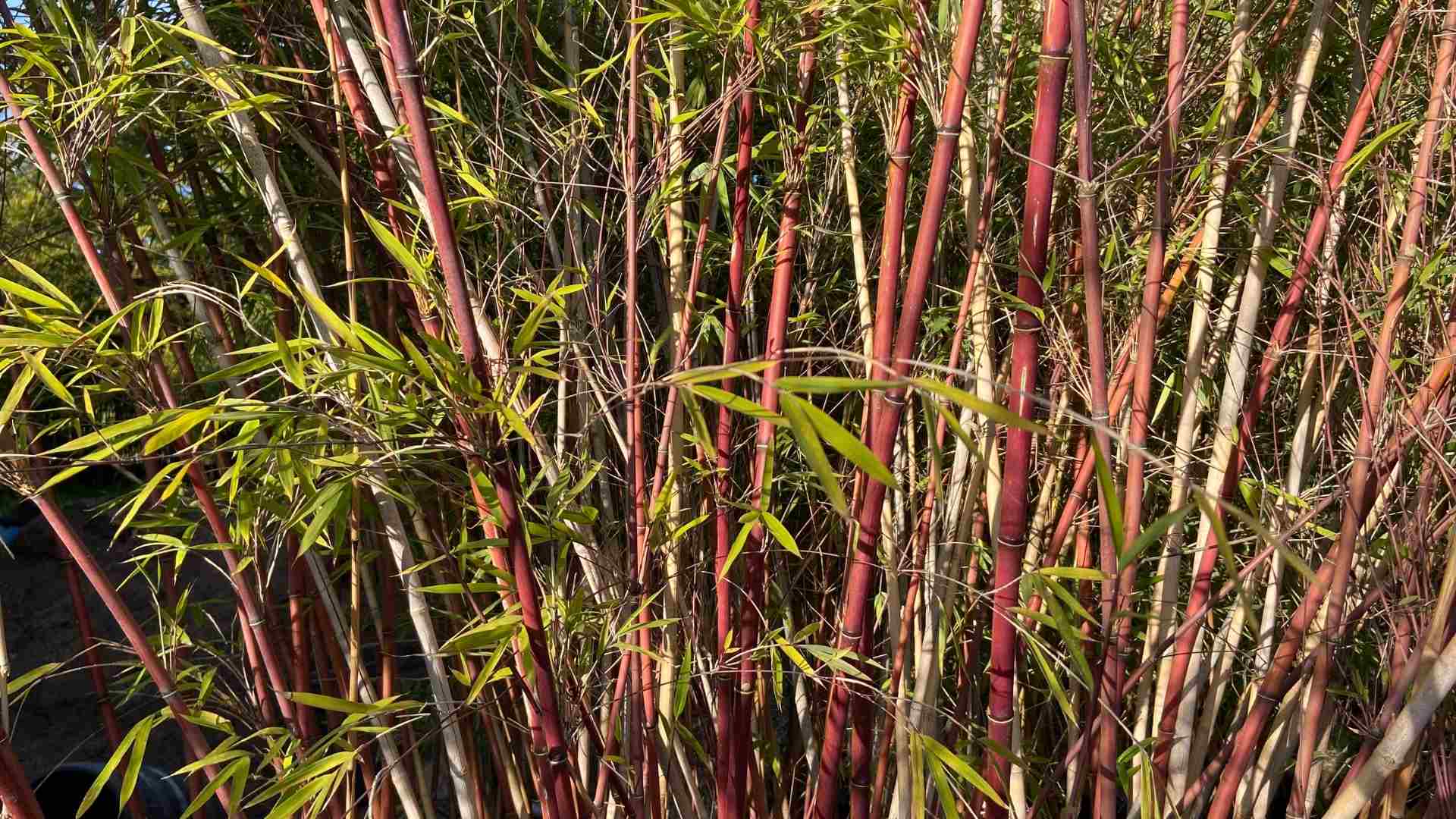I’ve been enjoying refreshing bamboo landscapes and renewable bamboo products for decades. So what took me so long to discover chocolate bamboo? After all, it combines two of my favorite things in the world. But Borinda fungosa is not high on the list of popular bamboo species. And yet it has so many favorable characteristics.
Chocolate bamboo, or Borinda fungosa, formerly called Fargesia fungosa, is a clumping, ornamental bamboo native to the low mountains of Southern China. Ideal for cooler climates and shady settings, this rare species makes a beautiful hedge or a striking centerpiece. The plant takes its name from the slender culms that turn a deep reddish-brown with more sun exposure, and typically reach 10-15 feet high.
Characteristics of chocolate bamboo: Borinda fungosa
Chocolate bamboo belongs to the genus Borinda, which is closely related to the genus Fargesia. These comprise an unusual category of bamboos that are clumping and yet very cold-hardy. Generally speaking, clumping bamboos are tropical, while running bamboos are the temperate ones. But as with all things in nature, these rules have exceptions.
Still, chocolate bamboo is not nearly as hardy as the Fargesias, which can commonly endure temperatures as low as 10 or 20º below zero Fahrenheit. The leaves and shoots of Borinda fungosa will incur first damage at around 20º F. But the plant will survive at least to 10º F. This species is more sensitive to heat, and will not do well in hot, humid climates like the American Southeast.
Chocolate bamboo is ideal in mild climates like the Pacific Northwest. It also prefers some amount of shade, especially in the afternoons. If you live in a hot, humid tropical like the Southern US, it’s not recommended. But if you’re in Southern California or Florida, you might try growing Dendrocalamus membranaceus, a big tropical bamboo with culms that turn chocolate brown as it ages, and with more sun exposure.
The most notable feature of Borinda fungosa, of course, is the vibrant coloration of its culms. With more direct sunlight, the canes turn a beautiful shade of dark red or magenta. As you can see, they are actually closer to raspberry than chocolate, but there’s no need to split hairs. The color is undeniably gorgeous.

The plants will usually grow 10 to 12 feet, or up to 15 feet high, significantly taller than most Fargesias. Individual culms only get about an inch in diameter. Thin, delicate, light-green leaves grow densely, especially around the culm nodes. Under ideal conditions, the foliage is bounteous and cascades gracefully. Harvested poles have an attractive ornamental quality, but are not especially strong or well-suited for crafts and building.
Overall, this is a beautiful and easy-to-care-for species of bamboo, so long as you’re in the right climate with mild summers and not too terribly cold winters. They grow quickly and vigorously, yet the clumps remain fairly tight and compact, so you don’t have to worry about them taking over. Chocolate bamboo also grows fairly well in a large pot or container, although it probably won’t get as large or as lush as it would in open ground.
Bamboo cousins: Borinda papyrifera
One more species of Borinda worth mentioning is chocolate bamboo’s cousin, Borinda papyrifera. Rather than deep reddish culms, the canes of B. papyrifera are a soft, powdery blue. Like B. fungosa, this species offers an unusually colorful contrast against the common greens of the average garden. As they age, the poles lose their powder and their blueish color, fading slowly to yellowish-green.
Check out our in-depth article to find more varieties of Blue Bamboo.
B. papyrifera is also distinctive for its oversized, paper-like culm sheaths which give the species its name. Papyrifera means “paper-making”, yet this ornamental bamboo is not ordinarily used for making into pulp or paper.
Similar in size, but slightly taller than chocolate bamboo, B. papyrifera will reach up to 15-20 feet tall. Over time, the upper half of the tall culms will fill in with long, green leaves and begin to arch over with a graceful, attractive appearance. Both species have a similar climate preference, growing best in cool, shady conditions, while tolerating winters down to about 15º F.
Learn more
The world of bamboo is filled with endless surprises. To discover more about the diversity and utility of these remarkable plants, peruse our website and enjoy some of these popular articles.
- Triple Hybrid Bamboo
- Timber bamboo for cold climates
- Growing bamboo in Europe
- More varieties of clumping bamboo
- Bamboo treehouses: Above and beyond
IMAGE CREDITS: Photos by Fred Hornaday


























Hi thanks for the information. I’ve had a chocolate bamboo in a large container for about 5 years. A great accent plant. But, I’ve noticed in the last few weeks more dropping of leaves and a fading out of color. I’m hoping it’s a winter thing, but I am concerned as to it’s survival.
Do you have any ideas? Thanks.
Russ